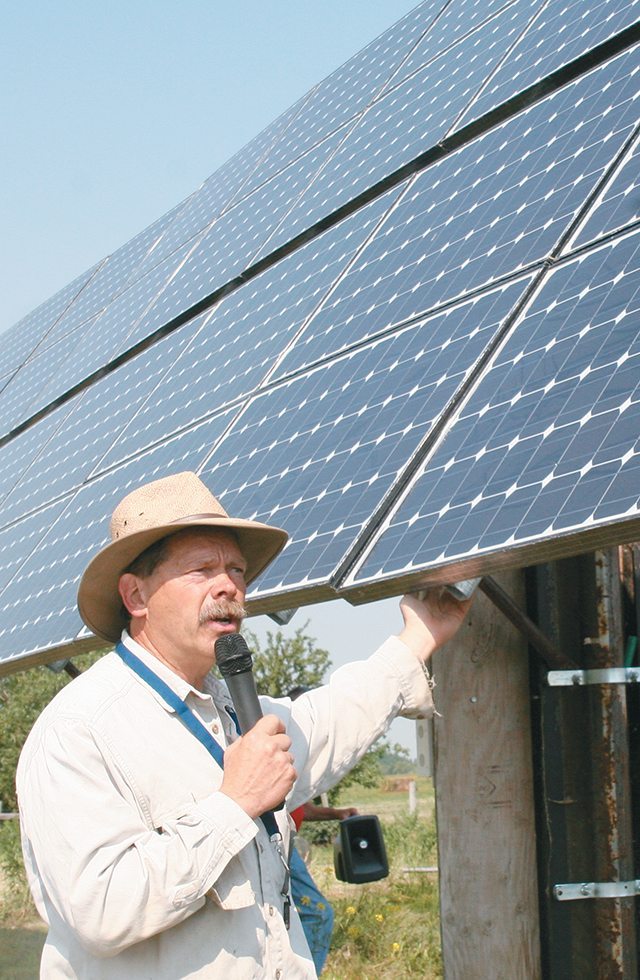Relaxing on a restaurant patio often includes being surrounded by greenery and flower displays.
If the patio is in the Calgary re-gion, there’s a good chance those displays came from Patty and Vern Bretin’s greenhouses southeast of the city.
“About 90 percent of my focus is on what I call the entertainment industry. I provide large scale planters for hotels, restaurants, estate homes and private parks,” Patty told an agriculture tour of the 70 acre farm.
“My focus is 100 percent on what my plants do after they leave my premises.”
Read Also

Pakistan reopens its doors to Canadian canola
Pakistan reopens its doors to Canadian canola after a three-year hiatus.
The Bretins have been in the flower business at this site for more than 20 years, and the customer base evolved over time.
Patty has a horticulture degree from Ontario’s University of Guelph and Vern has a degree from McGill University in Montreal with a special interest in alternative energy.
Patty learned early on that a key part of success is finding a niche.
The farm has evolved over time from a cash and carry greenhouse to a business that creates and sells large arrangements for public venues.
They supply to restaurants such as Earl’s, Moxies and the Deerfoot Inn and Casino in Calgary, as well as the Rimrock Hotel in Banff.
Other businesses and private parks also rely on landscaping ideas from the Bretins.
These are large displays that feature grasses, flowers and exotics, such as bamboo. Many plants are started a year early in the 18,500 sq. foot greenhouse.
“I use flowers that are easy to care for. Today’s modern flowers must continue to bloom without dead heading. They must look OK even if the waitress pours beer on them and they must not die from neglect,” Patty said.
“They must compel people to ask questions.”

The operation uses a lot of energy. The greenhouses are heated with natural gas. Two years ago, Vern learned about grants available for solar-powered systems.
The result is one of Alberta’s largest solar systems. The solar panels on the southern side of the greenhouse generate 10 kilowatts of electricity.
It took Vern a week to build it with help from his father and son. He bought the solar panels from Ontario and found inverters on eBay. Underground wiring delivers power to the grid and for their own needs.
His grandfather was an early adopter of alternate power when he in-stalled a windmill system for electricity on his farm near Ellerslie, Alta., 70 years ago.
Vern’s father had applied for the same grant and installed a system on his farm near Leduc, Alta.
“We’ve got four generations in-volved in alternate energy.”
Vern figures the system cost $30,000, which included the government grant of $20,000.
The 10 kilowatt system has produced up to 12 kW of electricity and he sells the extra power not used on his operation, to the provincial power grid.
Vern uses 10 kW of power for the farm and the greenhouses. Once the government agreement is finished, he will install batteries to store power to enable the farm to operate without power from the outside.
A cloudy day reduces power production, which is monitored daily via the internet.
“The best day this year was March 31 when I maxed out at 9,800 watts,” he said.
He still has to pay $100 for monthly delivery charges of electricity, but the power bill for actual use has dropped.
“Last year, I paid about $110 for electricity. I sold over $2,000 worth of electricity,” he said.
The panels come with a 20 year warranty, and he expects the system to last 30 to 40 years.
The weather has not been a problem. Hail blows in from the northwest, and the panels, which point at a southern angle, have not been damaged.
He said any homeowner or business in Alberta can do this, but the paperwork takes time to satisfy municipal rules and the need for a power inspection.















